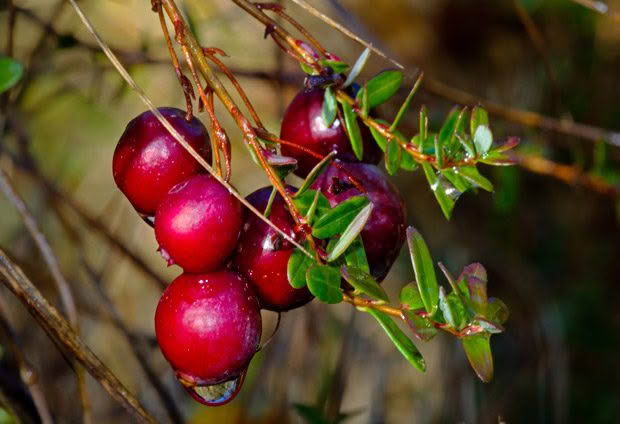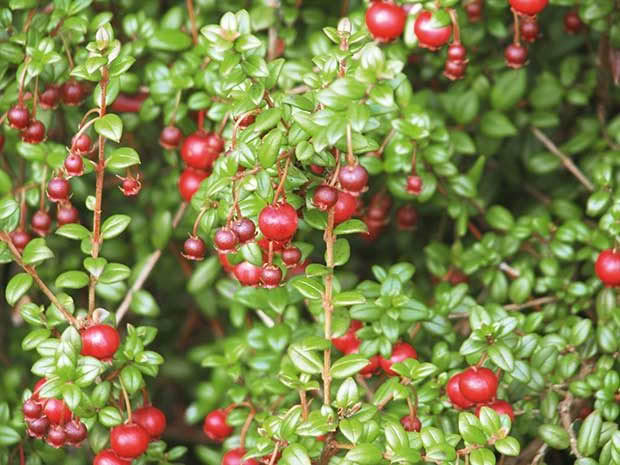Growing guide: The difference between cranberries and NZ cranberries (Myrtus ugni)

New Zealand cranberries can be planted any time of year and are best eaten fresh and fully ripe.
Words: Nadene Hall
CRANBERRIES
Best planting time: autumn
Pollination: self-fertile
Soil: like nutrient-poor, sandy, free-draining but moist acidic (pH 4.5-5.5) soil; consider growing in a mix of sand and peat; mulch with sawdust
Spacing: 0.5m
Yield: 1m² yields 1kg after 3-4 years
QUICK FACTS
1. Latin name is Vaccinium marcrocarpon, and it’s a member of the same family as blueberries.
2. These plants produce best in temperatures below 25°C and in regions with low humidity.
3. The cranberry ‘bush’ is more like a ground cover, growing tangled runners, up to 2m long at ground level.
4. In New Zealand, runners need to be pruned back each year or the plant will not grow the uprights that hold the fruit; runners need to be ‘combed’ to untangle them, then cut off.
5. Very hardy plants, with few requirements, but do best in a weed-free bed.
6. Two varieties available (Crowley and Bergman).
7. Fruit is ripe when red, but will sweeten if left on the plant until after first frosts.
NZ CRANBERRIES

Best planting time: any time of year
Pollination: self-fertile
Soil: tolerant of most types, but does best in free-draining, fertile, loamy soil
Spacing: 2-3m (grows 1.7m high x 1.5m wide)
Yield: 1kg per year after Year 3
QUICK FACTS
1. Latin name is Myrtus ugni, originally known as a Chilean guava (it is native to Chile) – its name was changed for marketing reasons when it was first introduced to NZ.
2. The fruit looks similar to a cranberry but is much smaller.
3. Are best eaten fresh when fully ripe and lighter in colour; the taste is a mix of strawberry, pineapple, and apple.
4. When eating fresh, squeeze the flesh out of the skin as the skin is tough; leave in the skin if cooking.
5. Makes a good hedging alternative to box and is easy to clip; clip after 2-3 years as it will be straggly.
6. Lovely fragrance from ripening berries.
7. Likes a sunny or partially shady, with irrigation, especially in the weeks before the fruit is ripe.
Love this story? Subscribe now!
 This article first appeared in NZ Lifestyle Block Magazine.
This article first appeared in NZ Lifestyle Block Magazine.
